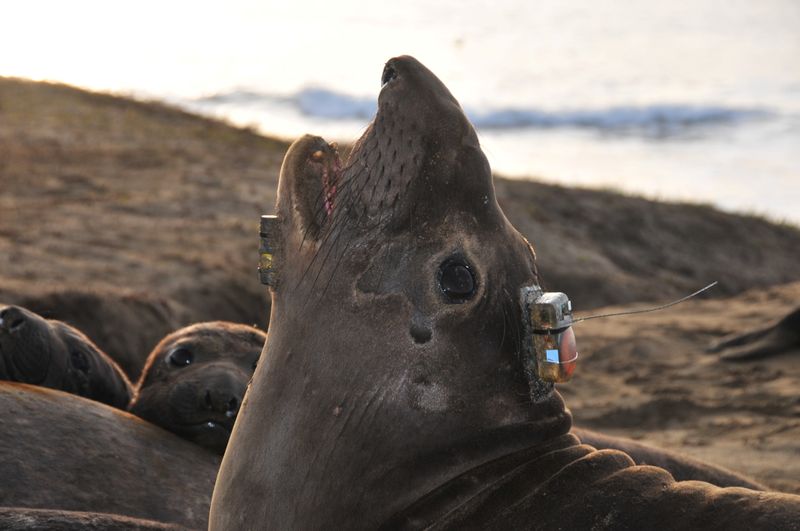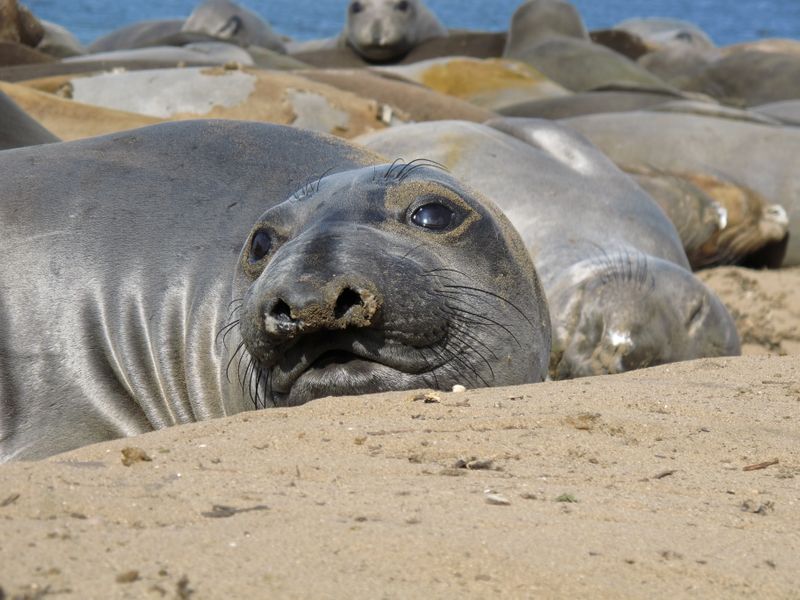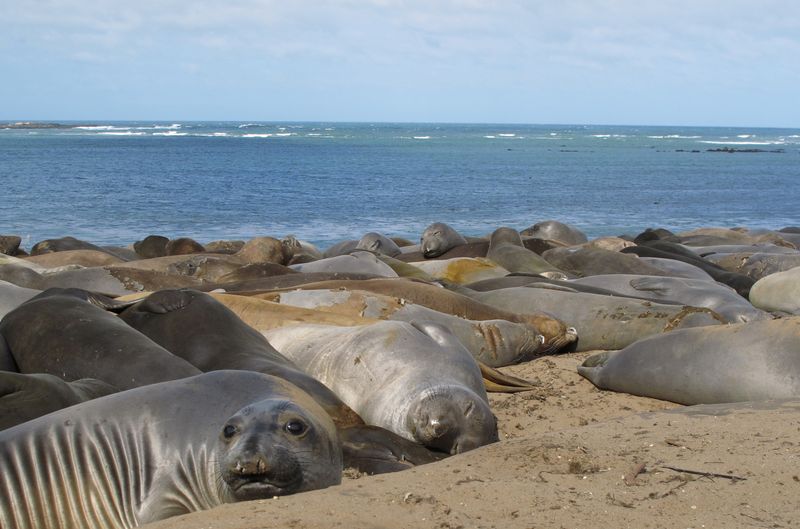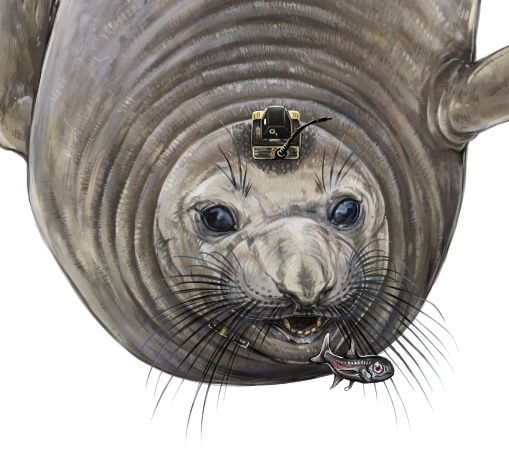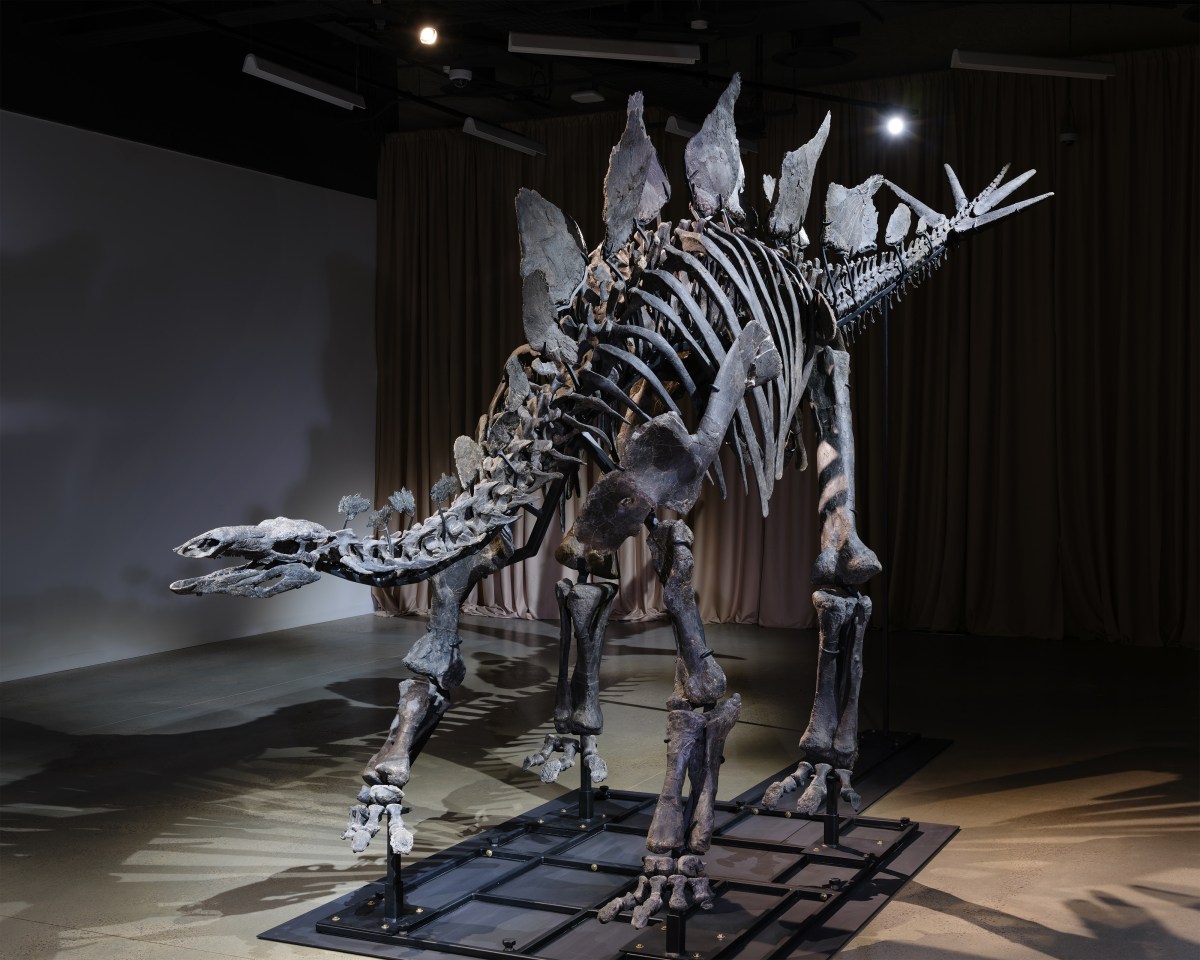(Reuters) – For elephant seals – one of the most distinctive of the 33 species that comprise the world’s seal family – it is hard work to stay fat.
Scientists have conducted the most thorough study to date of the unique feeding behavior of northern elephant seals, focusing on the females of the species during arduous two-month post-breeding migrations in the northeastern Pacific Ocean.
The seals were found to spend upwards of 20 hours every day – and sometimes a full 24 hours – in continuous deep-diving to feed on multitudes of small fish, rather than the larger prey favored by other deep-diving marine mammals, to gain the body fat essential for successful reproduction and insulation in the frigid depths. They fed 1,000 to 2,000 times daily.
“It is not easy to get fat,” said marine biologist Taiki Adachi of the University of St Andrews in Scotland, who led the study published this week in the journal Science Advances.
The researchers tracked 48 female elephant seals from Año Nuevo State Park in California, site of an important breeding colony, as they covered vast ocean distances. Their round-trip migration was up to around 3,700 miles (6,000 km).
They based their findings on data obtained from 2011 and 2018 using three small removable devices: one attached under the jaw that counted the number of times they fed and measured their depth; a satellite tracker attached atop the head that provided location information; and a “smart” video camera with an infra-red LED light flash, motion tracker and another depth sensor, also atop the head.
Elephant seals get their name from the prominent noses of the males that resemble an elephant’s trunk. There are two species – the northern elephant seal and the slightly larger southern elephant seal. The two are the world’s biggest seals and the largest marine mammals other than whales.
Male northern elephant seals may reach 13 feet long (4 meters) and weigh up to 4,500 pounds (2,000 kg). Females are substantially smaller, getting up to about 10 feet (3 meters) in length and 1,300 pounds (590 kg). The males feed only in coastal waters.
Some large marine mammals rely upon deep dives to forage for meals, with more food needed based on the animal’s size. Sperm whales, perhaps the heavyweight champions of the deep dive, hunt for large prey like giant squid.
The female elephant seals, also large but not on the scale of a sperm whale, have devised a different solution – eating huge amounts of small fish. But it is laborious to catch enough small fish to meet the energy needs of such a large animal.
“They continuously dive, for long periods of time – 20 minutes on average and about 100 minutes at maximum – and deep – 500 meters (1,640 feet) on average and about 1,500 meters (4,920 feet) at maximum – with only a few minutes breathing at the surface,” Adachi said.
“During the two-month migration, they never come back to the land. The sleeping hours in at-sea animals is not fully understood. But, based on our record of extreme foraging, their available time for sleeping should be less than 20% of the day,” Adachi added.
The range of the northern elephant seal spans the Pacific coast of the United States, Canada and Mexico. They generally breed and give birth in California and Baja California, usually on offshore islands, from December to March, and fast during mating season, losing perhaps a third of their body weight.
(Reporting by Will Dunham in Washington, Editing by Rosalba O’Brien)

